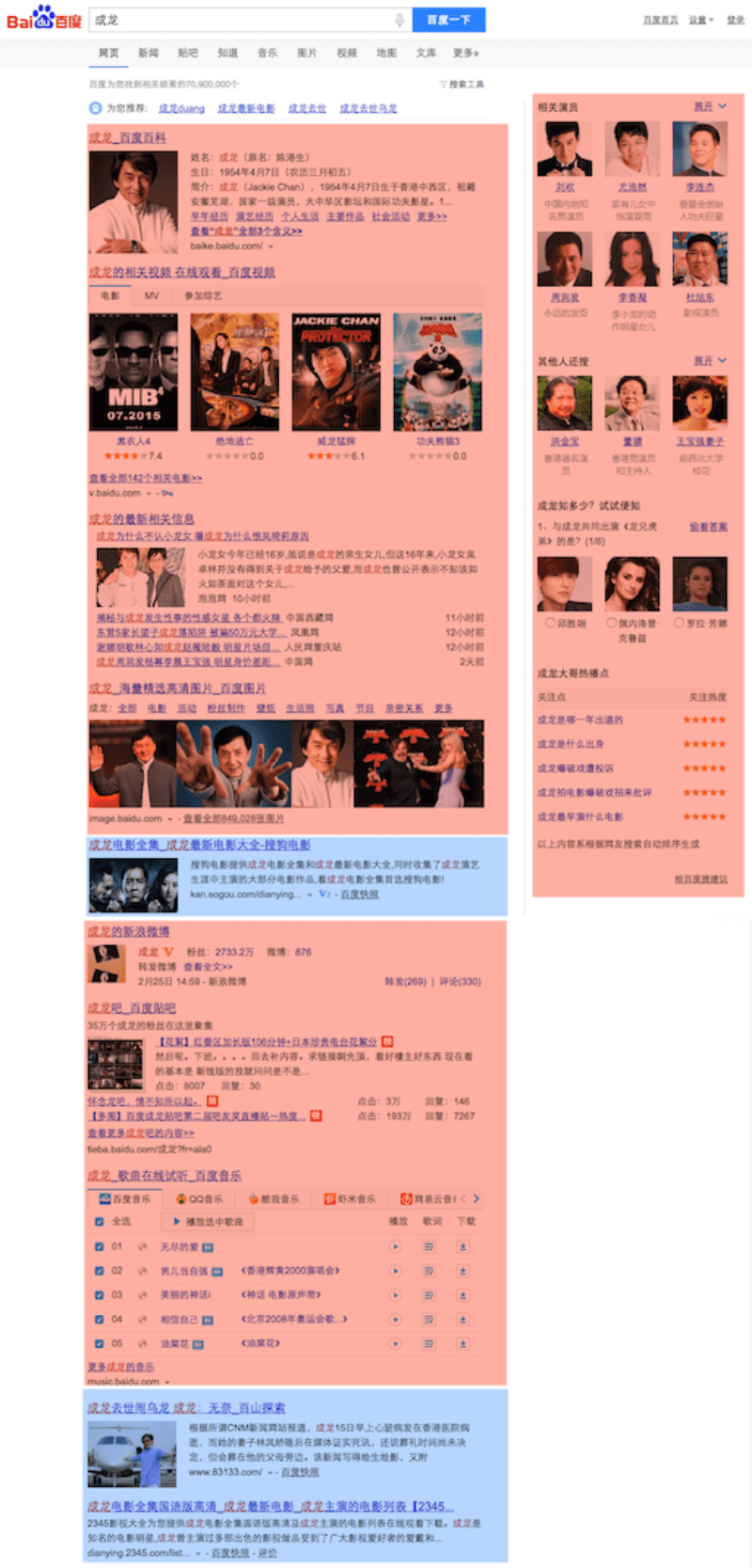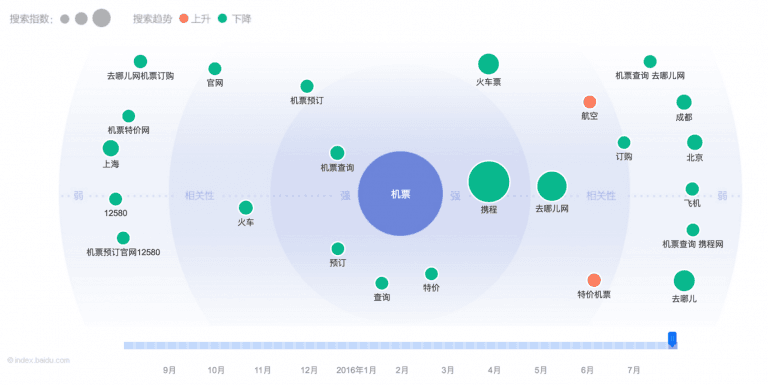If you’re new to the world of keyword research, the Baidu keyword planner will be a great first step. Here's a simple guide to understanding Baidu.

Keyword research is quite a broad area of discussion. This segment also directly affects your SEO. Here’s how you can understand it in layman terms.
As you may already know, there are a number of different search query variations potential clients can use to explore your offers on search engines like Google. Now, the first thing any SEO campaign should do is determining how to target the most optimal keywords for your website. This process is known as keyword research. Proper execution of an SEO strategy requires prior knowledge of keyword research. Otherwise, all your efforts will go in vain.
In general, the preliminary steps of keyword research include:
Before we dive in to understand Baidu Keyword Planner, let’s take a look at the mentioned steps in a more detailed manner.
At the very beginning of the keyword research process, it is important to brainstorm some of the root keywords. This will be based on the understanding of how you can best optimize your website. The aim here is to find the answer to the question “What queries will our target customers use to find our content?”
So, in order to brainstorm keywords from different points of view, you can start this process by involving people outside of your SEO team. This will include members from other departments, such as sales and customer service. You can also gain insights from existing clients and customers or other people in your target market.
At the same time, it is important to remember that this list of root keyword doesn’t have to be huge. However, it should cover all of the business goals your website is trying to accomplish. So, before you use tools like Baidu Keyword Planner, make sure you’ve done your own homework right.
After making a list of root keywords, SEOs will try to compile as many relevant and related keywords as possible. Some of the common places that SEOs look at for extra keywords include:
Understanding keyword demand is crucial for a successful SEO strategy. This is because SEOs will need to know the keywords being used by the target audience before developing their overall SEO strategy. Some of the common metrics to identify a keyword’s search demand are:
After we understand which keywords our target customers are using, SEOs will then analyze which keywords are going to help the site accomplish its business objectives. Statistical data related to how the target customers have engaged with the website can be very useful for this purpose. Some of the commonly used metrics for determining keyword value are as follows:
It’s not worth the time and energy to optimize for a keyword that gives you very little chance of ever being in the top 30-35 positions. So, it is important to have a look at the competitive environment before knowing what keywords to target.
In this case, there a number of factors you need to consider. How authoritative is the website for which you’re optimizing? How well does the page content match the intent of the search query? This will analyze whether or not your website has a chance of ranking at the top pages.
Similarly, you need to remember that not all keyword SERPs are created equally. Some of those may not have a large number of organic positions available on the first page of Google.
If you’ve followed so far, you now have a list of keywords that have demand, value, and competitive metrics. You should use these criteria to select target keywords and prioritize efforts.
Understand that not every keyword will meet all of the following metrics. So, it’s not an exact science. The needs of one website can vary from that of another. However, target keywords should ideally have the following qualities:
At this point, you should remember that every website needs a customized approach for the entire process of keyword research. So, the metrics used will vary depending on the industry and the type of website. However, this commonly used framework should work fine across most industries, countries, and languages.
Before we get to Baidu Keyword Planner, let’s look at how Baidu is different from the most widely used search engine, Google.
So far, we’ve talked about what a basic keyword research process looks like for any search engine, language, or country. However, in the case of Baidu, there are some additional elements that you need to take into consideration. Here are a few:
Most of the SERPs for the head terms in Baidu is crowded with rich snippets. For this reason, the actual position of your content might still end up on the bottom of page 1 or on page 2, even if your website is ranking very high organically. Because long-tail keywords usually have less rich snippets, focusing on long-tail keywords is an important technique.
For instance, look at this query for “Jackie Chan” on Baidu. It shows only 3 organic results on page 1, shown in blue. All others are either Baidu’s own properties or ads, shown in red.

Google is not really popular in China. Again, the go-to data source for most SEOs in the West is Google Adwords Keyword Planner and even that is not able to provide accurate or useful information at all times.
Similarly, most other third-party keyword research tools are based on the data compiled by Google Adwords Keyword Planner. So, almost all of the keyword tools that are designed for Google will not work properly for Baidu.
Hence, while the approach to keyword research is pretty similar, the tools you will need will be completely different from one another. Later in this article, we’ll talk about the most useful tools for Baidu keyword planner and research. We’ll also help explain how to use each one of them.
One of the worst ways SEOs mess up their entire strategy is by using Google Translate to translate their English keyword lists to Chinese. Then, they use that as their Chinese targeted keywords list. Please do not do take this approach. Using Google Translate will only worsen your strategy as it’s sure to give you incomplete and inaccurate results.
Occasionally, you’ll find Google Translate choosing words with a completely different connotation, meaning, and context. Understand that for any word, there can be as many as 3 – 20 synonyms in Chinese that can be used as a translation. It is highly unlikely that Google Translate will choose the best one.
Additionally, Google does have a notable presence in Taiwan and Hong Kong. Hence, some SEOs may also attempt to first conduct keyword research in these locations in Traditional Chinese using Google Adwords Keyword Planner. Next, they translate those results to Simplified Chinese.
Now, while this approach is a better option than directly translating from English, it is still not the ideal solution. Even for regions like Hong Kong and Taiwan, Google does not provide the best keyword suggestions in Chinese. Additionally, there will still be huge discrepancies in word usage when you translate from Traditional Chinese to Simplified Chinese.
Hence, there is unfortunately no way to take a shortcut in this regard. You must have a native Chinese speaker during keyword research to ensure efficiency as well as accuracy.
Data collection is an important part of keyword research. In this case, you will have to compile data from Baidu-based sources in order to get credible and correct results for Baidu keyword research. Let’s have a look at some of the most effective tools and methods that you can use:
Baidu Index (equivalent to Google Trend) can offer several informative insights for keyword research. Here are some of the things you can do with the help of Baidu Index:
Baidu Index helps you visualize the relevance and popularity of related keywords in a bubble-like chart. Take a look at this.

Baidu will offer a comprehensive view of the related keywords. At first, it will sort those by popularity. It will also show top-grossing related keywords and their change in popularity.

With the help of Baidu, you can look at search trends for mobile, desktop, or overall for the most recent 5 years. Additionally, you’ll find important events and media mentions related to the keyword, too.
With the help of Baidu, you can compare search trends by particular locations as well. The image given below shows a comparison of the search popularity for the keyword “机票” in Beijing (Orange), Shanghai (Green), Shenzhen (Blue), and Chengdu (Pink).

Baidu is not limited to showing popularity trends. In fact, it will also display search demand for a particular keyword basing on gender and age group.
One major disadvantage of using the Baidu Index is that it is limited to searching only 5 keywords at a time. Additionally, you can not export data through Baidu Index.
All you need to access Baidu Index is a Baidu account. Create an account here.
If you’ve verified your website with the help of Baidu Webmaster Tools, you can get quite a good amount of keyword data for your website. Because Baidu started holding back organic keyword referral data, it isn’t possible to view which organic keywords are driving traffic to your website in your web analytics software (such as Adobe Omniture, Google Analytics, or Baidu Tongji) anymore.
Fortunately enough, Baidu Webmaster Tools is there to the rescue. The tool still provides this data and thus it has become an invaluable data source for Baidu SEOs.
Baidu Webmaster Tools can actually be a brilliant starting point for Baidu SEO projects. However, there’s a certain drawback as well. What amount of data you can get from here will depend on how well your website ranks on Baidu. Hence, if your website has no existing rankings or traffic on Baidu, you won’t find any available data.
Some of the common uses of Baidu Webmaster Tools’ keyword data include:
Finally, we’re going to talk about the tool you all have been waiting to learn about - Baidu Keyword Planner.
Similar to Google Adwords Keyword Planner, Baidu provides its own tool that offers keyword data. Despite the fact that this tool is particularly aimed at helping marketers purchase search ads on Baidu, it can be very helpful for SEO keyword research as well. All you need to do is plug in keywords from your seed list to receive hundreds of more keyword ideas.
To access Baidu Keyword Planner, you would need a Baidu PPC account. Upon login, this is what it would look like:
Next, you can access Baidu Keyword Planner from the quick management panel:
When you search for keywords in Baidu, it will also show you related and similar keywords related to what you’re searching for.
Similar to Google AdWords planner, Baidu Keyword Planner shows various data on the selected keywords. Additionally, it allows you to sort them out by criteria. Moreover, when you click on the plus sign in the right column, Baidu will add the keyword to your keyword list.
For every one of the keywords in the list, Baidu Keyword Planner would individually show the number of daily searches, both on desktop and mobile. It will also display the recommended bid as well as the competitiveness ranking.
After the initial list is formed, the next thing Baidu does is review it by different performance criteria. You can access this data by clicking on the right button at the bottom of the list. This will also open up a detailed picture of the Baidu keyword data and projected campaign cost and performance.
Besides, Baidu Keyword Planner’s review panel also offers a simple way to view each keyword’s performance either on desktop or mobile separately. After this point, it is pretty easy to make adjustments to different parameters and look at how they would affect the performance in terms of projected cost, impressions, and click-through rate (CTR).
Baidu Keyword Planner is undoubtedly very useful for SEOs. However, there are certain drawbacks to using this tool. Google Adwords Keyword Planner supports searching for multiple keywords at a time. On the flip side, Baidu Keyword Planner merely supports searching for a single keyword at one go. Hence, you can not upload a list of keywords to get search volumes back for every one of them individually.
The worst part is to get access Baidu Keyword Planner, you will have to have a Baidu PPC account, as we mentioned earlier. However, a PPC account will require a valid Chinese business registration. Hence, if your website does not hold a physical presence in China or is not officially registered with the Government, you’re pretty much out of luck.
However, you probably can still work with an official overseas Baidu PPC reseller to get that access to you. But even still, you must have an active and paying PPC account to get your hands on all the data.
Another method to get keyword ideas is to utilize related searches and search suggestions as much as you can.
Related searches and search suggestions can sometimes offer a few long-tail keyword ideas that you won’t find in the Baidu keyword planner. Regardless, since it is a taxing and time-consuming process, we usually do not recommend extensively using it. Luckily enough, Baidu provides majority of the keywords in Related Searches. So, make sure you take a close look at that.
If you’ve read this far, you’ve definitely realized that keyword research is definitely a crucial part of any successful SEO strategy. It practically evaluates and focuses on understanding how your target market can find your website on different search engines. Thus, it more or less dictates your future SEO efforts.
The keyword research process will mostly be the same for both Google and Baidu. However, the methods and data sources will vary widely. As such, in the case of Baidu, you will need to be more attentive towards long-tail keywords, analyze a set of metrics that is different from that of Google, and use different tools to obtain the best results.